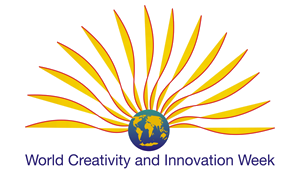How to Use your Creativity to Spark Innovation – from Forbes, an interview with Tina Seelig
How to Use Your Creativity to Spark Innovation
by Dan Schawbel, Contributor, Forbes
I recently spoke with Tina Seelig, the author of inGenius: A Crash Course on Creativity. Seelig has a Ph.D. in neuroscience from Stanford University Medical School. She is the executive director of the Stanford Technology Ventures Program, the director of the National Center for Engineering Pathways to Innovation, and is the author of the international bestseller What I Wish I Knew When I Was 20. In 2009, Seelig was awarded the prestigious Gordon Prize from the National Academy of Engineering for her pioneering work in engineering education. In this interview, she defines creativity, explains how to be more creative, talks about innovation obstacles, and more.
What does it mean to be creative?
Creativity is all about generating new ideas in any setting – in school, at home, and in the business world. It is particularly important in industry where the world is changing incredibly quickly, and breakthrough ideas are required to stay competitive. Generating fresh ideas is actually quite challenging because most people find it difficult to get beyond obvious, incremental solutions. True creativity requires the ability to break new ground, opening up a world of possibilities.
Can creativity be learned or are people naturally creative?
We are all naturally creative and, like every other skill, some people have more natural talent than others. However, everyone can increase his or her creativity, just as everyone can increase his or her musical or athletic ability, with appropriate training and focused practice. There are approaches that can be learned, skills that can be mastered, and environments can be tuned to foster increased creativity.
Is there a clear path to creativity and innovation? What are the obstacles?
There is no one path to creative ideas, just as there isn’t one way to get from California to Paris. However, there are ways that are easier than others. We can make the pathways to innovative much smoother by teaching people specific tools and techniques. The biggest obstacle to innovation is each individual’s mindset. Without the drive and motivation to push through obvious answers – and the confidence that a creative solution exists – it is unlikely that one will be found.
Can you explain your innovation engine model?
After a dozen years teaching courses on creativity and innovation at Stanford University, I have created a model which I call the Innovation Engine that illustrates how creativity results from the interplay of our internal world and our external environment. Essentially, your knowledge provides the fuel for your imagination, which is the catalyst for the transformation of information into new ideas. This process is deeply influenced by a myriad of factors in your environment, including the physical space, the teams with whom you work, and the implicit and explicit rules and rewards. The Innovation Engine is sparked by your attitude, which sets all the parts in motion.
Does creativity come from the top down or the down up in an organization? Why?
Creativity needs to develop from the bottom up and from the top down in organizations because it is a characteristic of individuals, small teams, and large groups. Each person needs the knowledge, skills, and attitudes required to generate new ideas. And, individuals need to be embedded in teams and organizations that support, encourage, and foster creative problem solving. Without a creative culture, individual creativity withers. And, without creative individuals, a creative culture can’t thrive.
Dan Schawbel is the managing partner of Millennial Branding, a Gen Y research and management consulting firm. Subscribe to his updates at Facebook.com/DanSchawbel.


“Creativity is all about generating new ideas in any setting – in school..” @marcisegal at it again http://t.co/evwsHlIt